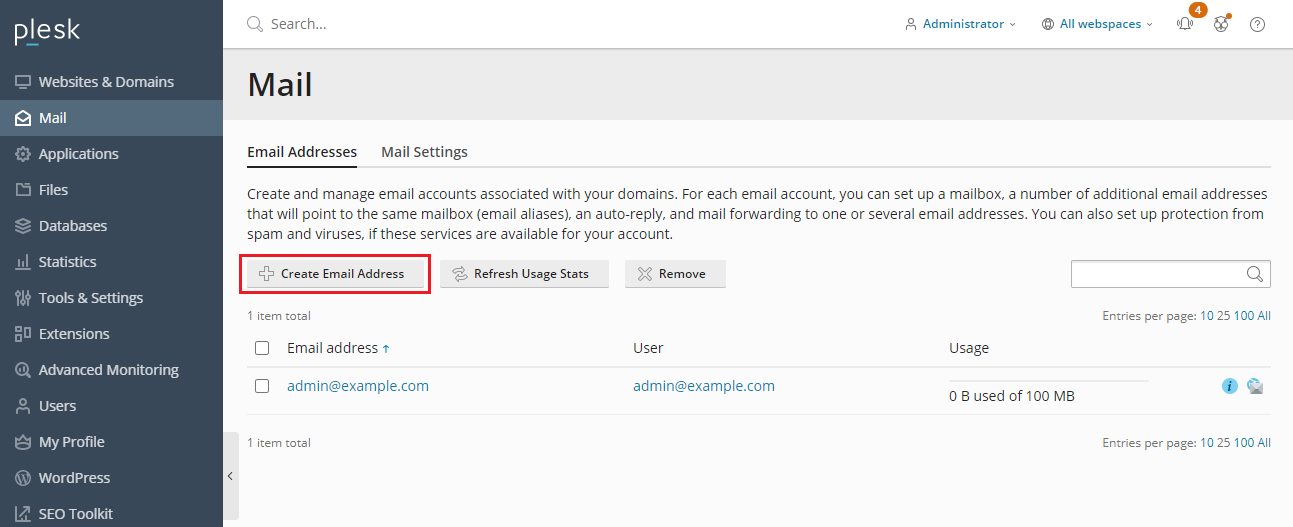Mail service enables Internet users to send email messages to each
other. Plesk can function as your mail server. It also enables you to
create mail accounts and manage them, including performing a number of
common mail-related operations. Such operations include changing the
password for a mail account, enabling automatic replies, and so on.
To create a mail account:
Go to Mail > Create Email Address.

To access your mail account using webmail:
- In a Web browser, visit the URL
webmail.example.com, where
example.comis the Internet address of your website. When
prompted, specify your full email address as the username (for
example,[email protected]), and specify the email address
password. - When logged in to Plesk, go to Mail, and in the list of email
addresses, click the icon next to the email address
icon next to the email address
you need.
Note: If you cannot open the webmail page, make sure that a webmail
solution is enabled. Go to Mail > Mail Settings, click the
name of the domain for which webmail is inaccessible, and select a
webmail client in the Webmail menu.
To access your mail account using a mail client:
Install a mail client program on your computer and start it. Typically,
in such programs you should specify the following settings:
-
Username. Specify your full email address in this field. For
example, [email protected]. - Password. Specify the password to your email account here.
-
Mail server protocol. This property defines whether you want to
keep copies of messages on the server or not. To keep the copies on
the server, select the IMAP option. If you do not want to keep
them on the server, select POP3. Selecting IMAP also enables you
to train the SpamAssassin spam filter on email messages you receive,
if SpamAssassin is switched on on the server. -
Incoming mail server (POP3/IMAP). Specify your domain name
here. For example, example.com. The default POP3 port is 110. The
default IMAP port is 143. -
Outgoing mail server (SMTP). Specify your domain name here.
For example, example.com. The default SMTP port is 25. Specify that
the server requires authentication.
For detailed instructions on configuring your mail client, refer to your
mail client documentation.
Note: If you cannot access your mailbox following the instructions in this
section, this might be caused by mail server settings. For example,
mail services may be listening on non-standard ports, or access to
them may be blocked. Contact your hosting provider to resolve the
issue.







